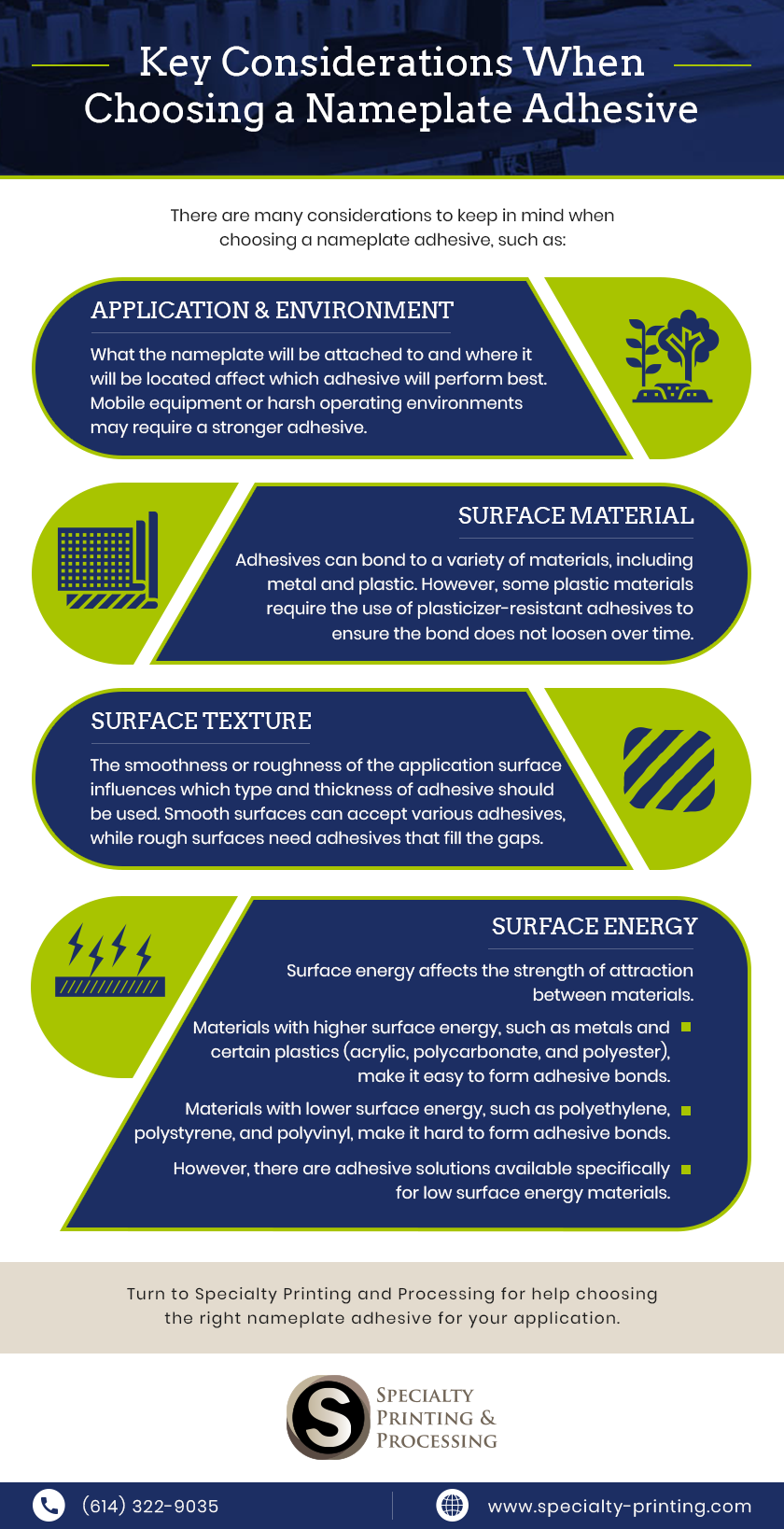How to Choose the Right Adhesive for Your Nameplates

When ordering custom nameplates, buyers will typically focus on how they will be made and what they will look like. However, many will forget to think about how they will be attached to the surface. This consideration is important because it can affect how easy or hard the nameplates will be to use once they are delivered.
There are numerous methods of attaching a nameplate, each of which is suitable for different applications. One of the most common is utilizing an adhesive backing. Advantages include ease of use, long-lasting hold, and compatibility with a wide range of application surfaces. However, the adhesive must be chosen carefully to ensure it works as intended. Below, we highlight some of the factors to consider when choosing an adhesive backing for a nameplate.
Key Considerations When Choosing a Nameplate Adhesive
There are many considerations to keep in mind when choosing a nameplate adhesive, such as:
Application & Environment
What the nameplate will be attached to and where it will be located affect which adhesive will perform best. For example, a stronger adhesive will be needed when attaching it to a mobile piece of equipment rather than a stationary piece of equipment. Additionally, outdoor and harsh operating environments will necessitate stronger adhesives than indoor and normal operating environments.
Surface Material
Adhesives can bond to a variety of materials, including metal and plastic. However, some plastic materials require the use of plasticizer-resistant adhesives to ensure the adhesive bond does not loosen or soften over time.
Surface Texture
The smoothness or roughness of the application surface influences which type of adhesive should be used. Smooth surfaces can accept various adhesives, while rough surfaces need adhesives that fill in the gaps.
Surface Energy
Surface energy affects the strength of attraction between materials. Materials with higher surface energy, such as metals and certain plastics (acrylic, polycarbonate, and polyester), make it easy to form adhesive bonds, while materials with lower surface energy, such as polyethylene, polystyrene, and polyvinyl, make it hard to form adhesive bonds. However, there are adhesive solutions available specifically for low surface energy materials.
Weight
The weight of the nameplate impacts the adhesive strength needed to form a durable bond between the nameplate and the application surface. The heavier the nameplate, the stronger the adhesive needed.
Nameplate Adhesive Options at Specialty Printing & Processing
Looking for durable and reliable adhesive name plates? Turn to the experts at Specialty Printing & Processing! We offer a wide range of adhesive options for name plates and other product identification solutions to ensure customers can choose one that suits their needs. Our selection includes, but is not limited to, the following 3M adhesives:
- 3M 200MP, which offers high-temperature performance, UV resistance, and waterproof properties
- 3M 300LSO, which offers high- and low-temperature performance
- 3M 300LSE, which offers UV resistance and waterproof properties
- 3M 467MP, which offers short-term heat resistance up to 400° F, solvent resistance, and high shear strength
In addition, we offer a range of other adhesives, including FLEXcon, Avery, and General Formulations. Our team is ready and willing to help you find the right adhesive solution for your application. Whether you need assistance with a new name plate or an existing one that fails to meet adhesive requirements, we can engineer a creative product solution that meets your needs.
Check out our graphic overlay, nameplate, and data plate printing pages to learn more about our product identification adhesive capabilities. To discuss your product specifications with one of our team members, request a consultation.




